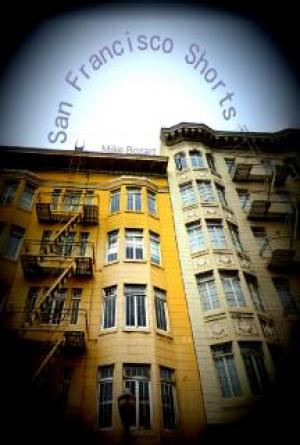FOOTNOTES:
[1] The Andalusians aspirate the s, and in pronunciation confound it with c soft and z, which the Spaniards pronounce like the English th. It is possible to recognise an Andalusian by the one word señor.
[2] That is, the privileged provinces, which enjoy special fueros, namely, Alava, Biscay, Guipuzcoa, and a part of Navarre. Basque is the language spoken in those provinces.
[3] A café provided with an ice-house, or rather with a store of snow. There is hardly a village in Spain which has not its neveria.
[4] In Spain every traveller who does not carry about with him specimens of calico or silk is taken for an Englishman, Inglesito. It is the same in the East; at Chalcis I had the honour of being announced as a Μιλὸρδος Φραντσέοος
[5] Fortune.
[6] In 1830 the nobility alone enjoyed that privilege. To-day (1847) under the constitutional régime, the plebeians have obtained the privilege of the garrote.
[7] Ironshod staves carried by the Basques.
[8] The magistrate at the head of the police and municipal administration.
[9] The ordinary costume of the peasant women of Navarre and the Basque provinces.
[10] Yes, sir.
[11] Enclosure, garden.
[12] Bravoes, bullies.
[13] All the Spanish cavalry are armed with lances.
[14] Alcala de los Panaderos, a hamlet two leagues from Seville, where they make delicious small loaves. It is claimed that their excellence is due to the water of Alcala, and great quantities of them are taken to Seville daily.
[15] Good-day, comrade.
[16] Most of the houses in Seville have an interior courtyard surrounded by porticos. The inhabitants live there in summer. The courtyard is covered with canvas, which is kept wet during the day and removed at night. The gate into the street is almost always open, and the passage leading into the courtyard is closed by an iron gate of elaborate workmanship.
[17] Mañana sera otro dia.—A Spanish proverb.
[18] A gypsy proverb.
[19] Sugared yolks of eggs.
[20] A kind of nougat.
[21] King Don Pedro, whom we call the Cruel, but whom Isabella the Catholic always called the Justiciary, loved to walk the streets of Seville at night in search of adventures, like the Caliph Haroun-al-Raschid. On a certain night he had a quarrel in an out-of-the-way street with a man who was giving a serenade. They fought and the king slew the love-lorn knight. Hearing the clash of swords, an old woman put her head out of a window and lighted up the scene with a small lamp (candilejo) which she held in her hand. You must know that King Don Pedro, who was very active and powerful, had one physical peculiarity: his knees cracked loudly when he walked. The old woman had no difficulty in recognising him by means of that cracking. The next day the Twenty-four who was on duty came to the king to make his report. “Sire, there was a duel last night on such a street. One of the combatants was killed.” “Have you discovered the murderer?” “Yes, sire.” “Why is he not punished before now?” “I await your orders, sire.” “Carry out the law.” Now the king had recently issued a decree providing that every duellist should be beheaded, and that his head should be exposed on the battle-field. The Twenty-four extricated himself from the dilemma like a man of wit. He caused the head of a statue of the king to be sawed off, and exposed it in a recess in the middle of the street where the murder had taken place. The king and all the good people of Seville thought it an excellent joke. The street took its name from the lamp of the old woman, who was the sole witness of the adventure. Such is the popular tradition. Zuñiga tells the story a little differently. (See Anales de Sevilla, vol. ii., p. 136.) However, there is still a Rue de Candilejo in Seville, and in that street a stone bust said to be a portrait of Don Pedro. Unfortunately the bust is a modern affair. The old one was sadly defaced in the seventeenth century, and the municipal government caused it to be replaced by the one we see to-day.
[22] Rom, husband; romi, wife.
[23] Calo; feminine calli; plural cales. Literally black—the name by which the gypsies call themselves in their own tongue.
[24] The Spanish dragoons wear a yellow uniform.
[25] A gypsy proverb.
[26] Saint—the Blessed Virgin.
[27] The gallows, supposed to be the widow of the last man hanged.
[28] The red (land).
[29] Flamenço de Roma—a slang term to designate a gypsy. Roma does not mean here the Eternal City, but the race of Romi, or married folk, a name which the gypsies assume. The first that were seen in Spain probably came from the Low Countries, whence the designation Flemings.
[30] A bulbous root of which a very pleasant drink is made.
[31] The ordinary rations of the Spanish soldier.
[32] That is, with address, and without violence.
[33] A sort of unattached body of troops.
[34] The idiots, to take me for a swell!
[35] A name which the common people in Spain give to the English, on account of the colour of their uniform.
[36] That is to say, to the galleys, or to all the devils.
[37] My lover, or rather, my fancy.
[38] La divisa, a bow of ribbon, the colour of which indicates the place from which the bull comes. This bow is fastened in the bull’s hide by a hook, and it is the very climax of gallantry to tear it from the living animal and present it to a woman.
[39] Maria Padilla has been accused of having bewitched King Don Pedro. A popular tradition says that she presented to Queen Blanche de Bourbon a golden girdle, which seemed to the fascinated eyes of the king a living serpent. Hence the repugnance which he always displayed for the unfortunate princess.
[40] In olden times the caporals were the leaders chosen by the Corsican communes when they rebelled against the feudal lords. To-day the name is sometimes given to a man who, by reason of his property, his alliances, and his clientage, exerts a certain influence and acts as a sort of magistrate in a pieve or a canton. The Corsicans, by an ancient custom, divide themselves into gentlemen (some of whom are magnificoes, others signori), caporali, citizens, plebeians, and foreigners.
[41] The word is in this instance synonymous with outlaw.
[42] A corps levied within a few years by the government and employed on police duty, concurrently with the gendarmerie.
[43] The uniform of the voltigeurs consisted of a brown coat with a yellow collar.
[44] A leather girdle used as cartridge-box and as wallet.







